|
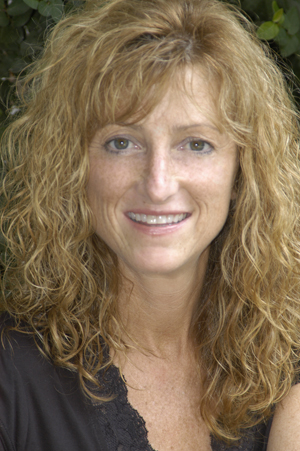
|
| Marjory Wentworth (Photo by Karen Ray Donner) |
Marjory Heath Wentworth is Poet Laureate of South Carolina. Her poems have appeared in numerous books and magazines, have been nominated
for The Pushcart Prize four times, and are included in the South Carolina Poetry Archives at Furman University. Her books
of poetry include Noticing Eden, Despite Gravity, and What the Water Gives Me, a collaboration with artist Mary Edna Fraser, and The
Endless Repetition of an Ordinary Miracle. Her children’s sotry, Shackles,
won a Silver Moonbeam Award. Marjory Wentworth also has poems coming
out in An Endless Skyway: Poetry from the State Poets Laureate of America, publication
date March 12, 2011.
The Smoking Poet: Welcome, Marjory. We are honored to have you back on our pages again—the
first time being a review of your latest poetry collection, The Endless Repetition
of an Ordinary Miracle, published by Press53, which we are reprinting in this issue.
You are one of only
six poets designated as poet laureate of South Carolina. What does it mean to be a poet laureate?
Marjory Heath Wentworth: Since my predecessor had passed away a few years before
my appointment, I really had no template to work from. North Carolina Poet Laureate Fred Chappell was full of advice,
which was very helpful. Soon after my appointment, Marie Harris, Poet Laureate
of New Hampshire, contacted me and once I began to communicate with Marie and others I understood immediately that the
role of a state poet laureate is similar to the national poet laureate in terms of finding ways to expand the audience for
poetry in the state.
TSP: Please share with us something of your growing up years, your development
as a poet. Who or what inspired you to become a poet? Have there been any important turning points, transitions, phases in
your work? And why has poetry drawn you rather than prose?
Marjory: My father loved poetry, and he read it out
loud to me quite often – Shakespeare, Frost, Chaucer. My mother claims that my father used to read The Canterbury
Tales to me when I was still in the crib, and that I wanted to hear poetry more than children’s stories. The point is that I was exposed to poetry and it was available to me like anything else in a child’s
world. It was in the air, and this is enormously important. Writing poetry, therefore, seemed like a natural thing to do.
It wasn’t something I was intimidated by.
I
also was very sickly as a child and spent a lot of time in the hospital or confined to bed. Sometimes I wasn’t allowed
to walk up and down the stairs for long periods of time. There were no computers or CD players. There was very little on TV
for children, and so I read to keep myself busy. I read constantly and I was allowed to read whatever I wanted to read. Like
most writers, I started out as a passionate reader.
I
also loved the poetry I heard in a church. Language is elevated in religious texts, and there is a lot of poetry in a church
service. Every word spoken has such weight. I think that’s where I fell in love with the elements of poetry –
its music, the repetition of words, meter, and rhyme and so on. The Bible is filled with metaphors. The stories all had so
many meanings. I loved the mystery inherent in all these stories and the stillness I felt inside the church. I was able to
replicate this feeling when I wrote poetry.
When
I was in middle school, my father was diagnosed with leukemia, and I began writing poems at that time. He died when I was
15. Poetry became a refuge for me. It was the place to articulate all of the emotional pain I was experiencing. That initial satisfaction of finding words that matched my emotions and constructing something tangible
out of all that grief would stay with me and determine the course of my life.
I’d
like to think that my poetry is always changing and improving in some way. That’s
what makes it interesting and challenging. Even though I teach writing, I am always learning. When I first started publishing,
I was writing a lot of nature poems that were inspired by the unique South Carolina Lowcountry landscape. I lived on a barrier
island for over a decade. During that time, we experienced a Category 4 hurricane, so my connection to place became intensified
in ways I never could have expected. Eventually I became very interested in the history of Charleston and the surrounding
area, in particular African-American history and the Gullah culture, which continues to be enormously important here. My work
reflects these interests. I have been working more in form and experimenting with
using white space as pauses within the line rather than punctuation or line breaks.
No matter how much changes,
I am always writing about the essential things that inspire and move me. Writing poems helps me understand things that I might
not understand otherwise. Some of these things are personal, but speak to larger issues; others have to do with the larger
issues of social issues and human rights.
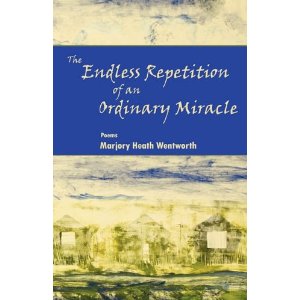
TSP: You have worked internationally for human rights. One can imagine what a
life-changing experience that would have been … please tell us about the work you did, refugee resettlement, the program
in Somalia, in many countries around the world for about a decade. You’ve also worked for Amnesty International and
the Church World Service. How has this shaped you? How has this influenced your writing?
Marjory: As an undergraduate at Mt. Holyoke College, I won an International Fellowship
to work at UNHCR in Geneva, Switzerland. I was majoring in anthropology and political science, but nothing could have prepared
me for being at the UN during the conference on “The Boat People.” During
that summer of 1979, as Indo-Chinese fled their war torn homes and Pol Pot’s atrocities in Cambodia were just beginning
to known, the biggest refugee crisis since World War II occurred. Although my
job had to do with developing plans for finding a common language to create text books for refugees living in Somalia, I became
immersed in the Boat People Conference I also studied for a year in England at Oxford University, where I studied cross-cultural
communication. I lived with North Africans and that in itself was an education. When I returned to Mt. Holyoke I wrote my thesis on the cultural assimilation of Indo-Chinese
refugees and found work in this field as soon as I graduated in as a refugee resettlement worker.
I worked at The International
Institute in Boston, Massachusetts, which was a center for education, legal advice and social services for immigrants from
all over the world. Working with refugees from all over the world has taught me much about non-verbal communication. How do you teach people about a written language who have never had a written language
of their own? What about electricity and traffic lights? I still remember the first home visit I made in Lowell, Mass –
the Hmong refugees stored shoes on the shelves in their refrigerator and used electric wiring as hair elastic. Suicide rates among the elderly were quite high, but the young people assimilate fairly quickly easily. These details found there way into poems that were published years later. “Linthong,” for example, essentially tells the
story of a typical Indochinese refugee boy that I worked with over the years.
In New York, I worked
at Church World Service with Indo-Chinese, Polish and Haitian refugees. I was
in graduate school at the time, and much of my work experience found a way into my poems. Because
I was studying with Joseph Brodsky and Carolyn Forche in particular, I was encouraged to write about the work that I was doing. I also worked at magazines and at Amnesty International and ultimately ended up as
the U.S. Marketing and Publicity for Readers International. The people I met and
the stories I heard throughout those years continue to both haunt and inspire me. Just last year I wrote a poem called “Boat
People,” that was published in my most recent book. I don’t think I will ever stop writing about people whose
human rights have been violated.
I have written a few
poems about political dissidents, torture and arbitrary detention. One of my poems, “Dancing Barefoot in Atlanta,”
reconnected me with an old Amnesty friend Juan Mendez. We met through Amnesty
International when I was still in college. (He was a political prisoner in Argentina.) He is now UN Special Rapporteur on
Torture and Other Cruel, Inhuman or Degrading Treatment or Punishment. I just
co-wrote a book (Taking a Stand: The Evolution
of Human Rights). It is coming out this fall with Palgrave Macmillan. I have been immersed in the subject for a
few years now and will be writing about human rights in an even bigger way in the future.
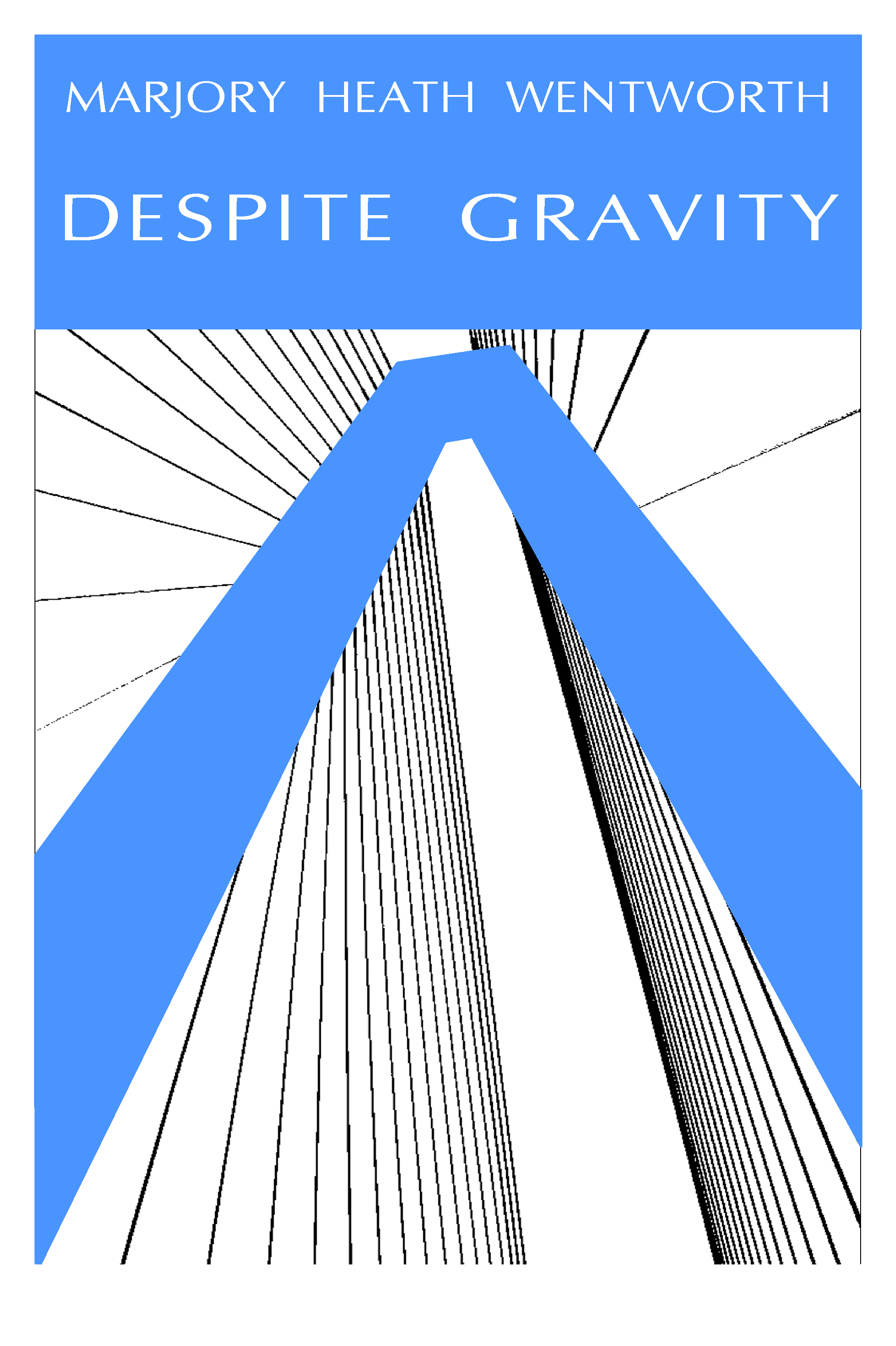
TSP: You have had some very prominent poet-mentors: Pulitzer Prize winning poet
Peter Viereck, Nobel Prize winner Joseph Brodsky, renowned political poet Carolyn Forché. You’ve also studied with Galway
Kinnell and Philip Levine. How important is it to a poet to have great teachers and mentors? What did you learn from these
remarkable poets?
Marjory: It was nothing short
of amazing. They were all fantastic teachers, and what I learned from them continues to inform my writing and my teaching.
I think it’s important to have the support of established poets at some point in one’s development as a writer. All of them were incredibly generous and supportive, and I was most fortunate to have
the opportunity to study with them. Peter Viereck let me into his upper level tutorial on intellectuals and writers under
totalitarianism, but he also liked my poetry and encouraged me in that way. I
first encountered Joseph Brodsky through stories told my beloved professor, Joseph’s dear friend, Peter Viereck. During
my second year at NYU, Joseph joined the faculty. I enrolled in his craft of poetry
class. Joseph Brodsky was the most passionate teacher I ever had. He loved history and politics, and he could discuss these
subjects as knowledgably as he discussed poetry. His lectures on his favorite poets, Robert Frost and W. H. Auden, were virtual
love songs filled with fascinating details and lessons on craft and form. He usually
had a cigarette lit, and if a student didn’t know an answer, he would flick ashes on his or her head. This happened quite frequently. We had to memorize one poem
per week, and Brodsky was relentless about the discipline of memorization. He
was always very nice to me, because I had been a student of Peter Viereck’s. Needless to say, ashes were never flicked
on my head.
You never knew who would
be in class. Susan Sontag and Mikhail Baryshnikov showed up quite frequently. I
can still picture both of them, notebooks and pens in hand, acting like any other students in the Creative Writing Program. This was quite humbling. Joseph Brodsky
was such a dynamic teacher that all attention was on him, and celebrities visiting class were never a distraction. Brodsky had a fierce energy about him, and he never stopped moving. Even when he taught a two- or three-hour
class, he walked around the classroom the entire time he was lecturing. He talked
quickly in a kind of rapid fire, as if he couldn’t get the ideas out fast enough. But
I wrote down everything he said, and I find myself quoting him now when I teach my students.
Galway
Kinnell was the Director of the Creative Writing Program at NYU, where he was the Erich Maria Remarque Professor
of Creative Writing for 25 years. He seemed to genuinely love teaching poetry,
and he was devoted to each and every one of us. Our classes were held at night,
so that we could work during the day. He felt that this was a realistic and practical consideration. He was humble and down
to earth and created a supportive environment in which each student found their own style and unique expression. Other teachers
at NYU, who had experience teaching in similar creative writing programs, described how refreshing it was to teach in a place
where all the student poems did not sound the same! There is no doubt that this quality can be attributed to Galway Kinnell’s
general approach. The night he won the Pulitzer Prize, he taught the workshop and went out to
Eddie’s bar after class for a beer the way he always did with his students. I
think this speaks volumes about Galway.
If you read his poems closely you witness the humanity that inspires and guides him. There is an attention and sensitivity to things that others might ignore – whether
it be the creatures that live among us or strangers on a city street – his poetry celebrates and reminds us of the things
we already know are most important in our lives. Poet Liz Rosenberg once
wrote that "Kinnell is a poet of the rarest ability, the kind who comes once or twice in a generation, who can flesh out music,
raise the spirits and break the heart." There is no higher praise.
Carolyn Forche was still
going back and forth to El Salvador when she was my teacher. She immediately took me under her wing. I was working on poems
about the refugees I worked with during the day, and we have been friends ever since. She encouraged me and helped me find
ways to turn the material into poetry. I also worked with her husband, war photographer Harry Mattison, on a book project
about immigrants. She is a true mentor, and it has been wonderful to reconnect
with her over the past few years in particular. We have taught together at the Block Island Poetry Project a couple of times,
and I learn so much from here every time we meet. Carolyn is a genius. She has
a huge heart as well. It is a privilege
and a great honor to be her friend.
Phil Levine was a fantastic
teacher. Carolyn encouraged me to study with him at NYU, and I learned more from him in one semester that I can begin to describe
here on these pages. He also believed in me and my writing in ways that were profoundly important at the time. The first poem
I ever published was called “The Last Night.” Phil allowed me to work on that poem exclusively during the workshop.
It was almost like a tutorial. Having these teachers of this caliber obviously helped me believe in myself as a writer and
feel like I had something worth saying that really mattered. I am eternally grateful to all of them.
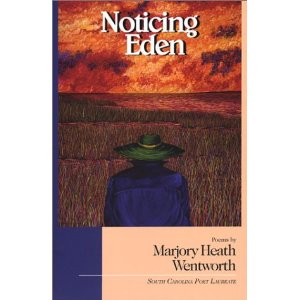
TSP: In your human rights work, you’ve also been involved in promoting the
work of dissident writers. Talk to us about the role the literary arts, or art in any medium, really, can have in revolutions,
rebellions, political dissent?
Marjory: As a graduate student in creative writing and English literature at New York
University I studied with many great poets. One of them was the Nobel Prize winning Russian poet, Joseph Brodsky. He knew that I worked in the field of human rights and for various magazines. I was an assistant to the publisher of the New York Review of Books,
Whitney Ellsworth, and we worked together for Amnesty International. I also worked at The Nation. At that time, there were a handful of people intensely
interested in the intersection of literature and human rights. Joseph Brodsky,
as a writer in permanent exile, understood these matters better than anyone else I knew...
This was the late 1980s,
and there was very little contemporary fiction in translation available in English from the Middle East, Latin America, East
Europe and Africa. Many of the great writers from these countries were jailed,
exiled or killed because of their writing. A publishing house called Readers International
was formed by Sherman Carroll and Dorothy Connell, from the UK section of Amnesty International, to rectify this situation. They were in London and they needed someone to promote the titles in the United States.
I was interviewed for this job in Joseph Brodsky’s Morton Street apartment in the Village in New York, which had become
a haven over the years for dissident writers. I was offered the job on the spot, and I have been working in marketing and
public relations ever since then.
The purpose of the books
published by Reader’s International was to educate, inform and demystify cultures, countries and entire continents to
an English speaking audience. The Rockefeller Foundation immediately understood
the significance of these books and awarded us a one million dollar grant to get the titles into American libraries. It is hard to believe that during the 1980s it was virtually impossible to find contemporary
fiction from places like Haiti and East Germany, but it was. Some of the writers
had communist affiliations or were from countries that were considered anti-US. Many
of the Latin American writers, for example, were not allowed into this country. Short
story writer Sergio Ramirez, for example, was the Vice President of Nicaragua during the Reagan administration. That was the first time that the CIA called me and asked about a writer. Afer a while, we just put the CIA
on our reviewer list.
I also worked
on behalf of many Latin American women poets who were here on book tour. They were part of an anthology called Ixok Amar Go, Central American Women’s Poetry for Peace. My
phone was tapped, and I was often followed. I have many stories from that period of time, which demonstrate what a threat
these women were to the U.S. government. At one point, the writers were in Canada before returning to the U.S. to finish their
book tour and U.S. immigration wouldn’t let Daisy Zamora back in to the U.S. The poets were booked on The Phil Donohue
show, and pressure was put on the producers to cancel this segment which they did. Eventually we read in the New York Times, that anything that had to do with peace in Central America was considered subversive by the US
government. I am not making this up. The power of language to tell the truth and express what is really happening in a place
cuts through political rhetoric and becomes the most accurate source of information for the human situation. In this way literature and art are often a more accurate record of human history than a textbook.
TSP: And then, on the flip side, the role of art in healing …
Marjory: Yes, this is an area of interest. For more than ten years I
have been teaching in a program called Expressions of Healing – A Visual and
Literary Arts Program for Cancer Patients, Survivors and Loved Ones. It meets
once a week at Roper/St. Francis Hospital, and it is free and open to anyone whose life is profoundly impacted by cancer.
Through various creative exercises, art therapist Nancy Hackard and I, try to help people express their feelings. Most of the participants have never written a poem or done a painting. Witnessing
their creative process is quite extraordinary. People often assume that it is
painful and difficult to teach people who are in such acute physical and emotional pain. It
is quite the opposite. In fact, it is the most rewarding work I have ever done.
People with cancer are
living in a different world than the rest of us. While we run through our hectic
lives we rarely have time for reflection. In the parallel universe of the cancer
patient, however, time has a different meaning. Their world is turned upside-down. Priorities shift and expectations change. Day-to-day life revolves around treatment schedules rather than work and school schedules.
The biggest shift in their lives is an internal one, because people with cancer are facing their own mortality. They possess enormous amounts of wisdom about the big things – the things most of us don’t take
time to think about. Painting, journaling and writing poems is a way for people to access these big things, and the results can be quite powerful and moving.
TSP: You’ve worked at the New York
Review of Books, too. Why should readers—and writers—pay attention to book reviews and critiques? Isn’t
it all just subjective opinion? Often, books that are most fiercely criticized turn into the next generation’s literary
trail blazer.
Marjory: We are in the throes
of such a profound change in the publishing world right now, and it’s difficult to say how it will all sift out. There
are few actual book reviewers left in the U.S., apart from the biggest newspapers and magazines. It’s great that blogs
and the Internet allow any reader to comment on a book, but the results can diminish the kind of intellectual rigor that an
actual critic applies to his/her reviews. On the other hand, there are brilliant people writing reviews online (LIKE YOU!!!) It’s a matter of finding well-written thoughtful criticism, they way we would
with print material.
TSP: Reading poetry is for a select audience. Not that it should be. It shouldn’t
be … but far fewer read poetry than prose. Why do you feel it is worth it to make that extra effort to read poetry?
What does it offer us that prose does not and cannot? How can we encourage a growing readership in poetry?
Marjory: This is of
enormous concern to me, in particular as a Poet Laureate. Poetry is an unused
resource, an art form that is too often overlooked and neglected. It is something we turn to in times of crisis perhaps, but
forget during the day-to-day rush of our lives. But isn’t that when we need
poetry more than over? I think so. Poems
invite us to slow down and be still, to appreciate everything and everyone around us, to think about what really matters in
our lives and the world we live in. Poetry is a record of the feelings we have
about experience that we often don’t take time to express. This is enormously important. I think that the core of poetry’s power is its ability to find language that describes the indescribable. Poems acknowledge the worst of human behavior, while reminding us of the best things
about being alive
There certainly are
plenty of poets writing great poems, but there is still this huge disconnect between poetry and the American public. Since
poetry exists outside of the marketplace, it owes nothing to the forces that govern the rest of our lives. Perhaps that is what makes poetry so interesting and innovative. In
this way, the language of poetry, whether it be ordinary or incredibly complex, remains sacred to all who write it and read
it. But, in a capitalist country, something without a monetary value essentially
has no value. It’s a Catch-22... There are a multitude of ways to expose more people to good poetry — from public displays (poetry on subways
and and so on), to working with teachers and schools to find exciting ways to teach children so that it becomes part of their
lives at an early age. Text books often include poems that were written centuries ago with unfamiliar language that students
simply can’t relate to. It’s like using maps of the world that were made in the 1700s in contemporary social studies
textbook. Absurd! There’s so many excellent poems that young people can
really relate to. Why not start with that?
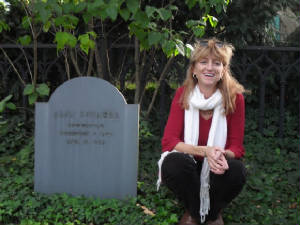
|
| Marjory at poet Amy Lowell's (1874 - 1925) gravesite |
TSP: American public education has taken many great hits lately. We are slipping
badly in world rankings. There is a great deal of talk about the hard sciences. What are your thoughts about the arts in school?
Marjory: The arts in general are not valued by certain segments of the population,
and when government is anti-arts (as they are in South Carolina), I find this enormously frightening. I think an arts education does more than teach children an appreciation of the arts. It teaches creative
thinking skills and problem solving skills that are important in all areas of life – work, relationships etc. I have done artist residencies in dozens if not hundreds of schools and I taught creative writing to middle
and high school students at a public arts magnet school. There are minimal academic
requirements to gain acceptance to the school, which accepts students based on an audition. And yet, this school has one of
the highest grade point averages and highest test scores of any school in the state. I think it demonstrates that an arts
education equals good education.
There are times when
all of us need to make sense of the world in ways that go beyond the ordinary ways we process things. Human beings require
more than logic – we always seek to know the meaning of things. We want to understand our feelings and actions, as well
as those of others. Young people experience enormous periods of self-doubt and confusion about a myriad of things as they
go through adolescence. The arts is an excellent way for them to find expression and meaning during the turbulent teenage
years.
Charleston’s public
schools are plagued with problems. Less than half of the students who attend the city’s only high school actually graduate. Perhaps the arts, creative writing in particular, can help turn things around for
some of the students in a small way. That is my hope and is why I have worked
to create and teach — in a poets
in the schools program here.
TSP: You are a founder of the non-profit Lowcountry Initiative for the Literary
Arts (LILA). Tell us about LILA—what you do, how you do it, and why.
Marjory: LILA’s mission (Lowcountry Initiative for the Literary Arts) is to nurture
and promote the literary arts in South Carolina. It is dedicated to developing
programs that enrich the area’s literary communities and diversifying the opportunities open to students, writers and
readers. It approaches this goal by connecting, educating, and promoting writers
(and readers) at every stage of development, from the novice to the professional.
Started by Carol Ann Davis, editor of Crazyhorse,
English Professor at the College of Charleston, and me, LILA’s executive board now includes poets, fiction writers,
spoken-word artists, and journalists. (Sue Monk Kidd, Pat Conroy and Dorothea
Benton Frank to name a few … )
LILA was formed in the fall of 2004, with the goal of starting a writing center in Charleston. We envisioned
that the center would have workshops for adults and children, book signings, readings, and carrels for working writers and
poets. We host the biggest arts festival in the U.S. here, and we have an incredibly rich and talented creative community.
It is shameful that we have no community based arts center in Charleston. We don’t have an arts council either. I felt
that if we focused on the resources within the writing community as a touchstone, we could make some changes that would benefit
the entire community.
While a bricks-and-mortar center remains our goal, LILA quickly realized that other pressing needs existed that
it could address immediately. A few of our current literary outreach projects
are: (Poetry Out loud) a poetry recitation contest for high school students (an NEA program), co-sponsoring a local storytelling
festival, “LILA Reads the Classics” at Barnes and Noble, a series of workshops in a wide range of genres, from
poetry to screenplays, offered free and open to the public at the county library, and a poets-in-the-schools program (which
received a $50,000 grant). LILA also has acted as a conduit for NEA programs
to reach targeted grant applicants and institutions, and as such has hosted the Poetry Out Loud regional competition and worked
as a partner with the Charleston County Library to apply for a grant from The Big Read program. Last fall we brought Capital
Bookfest Charleston to town. Over 5,000 people attended, and this is the first book festival we’ve had in the city.
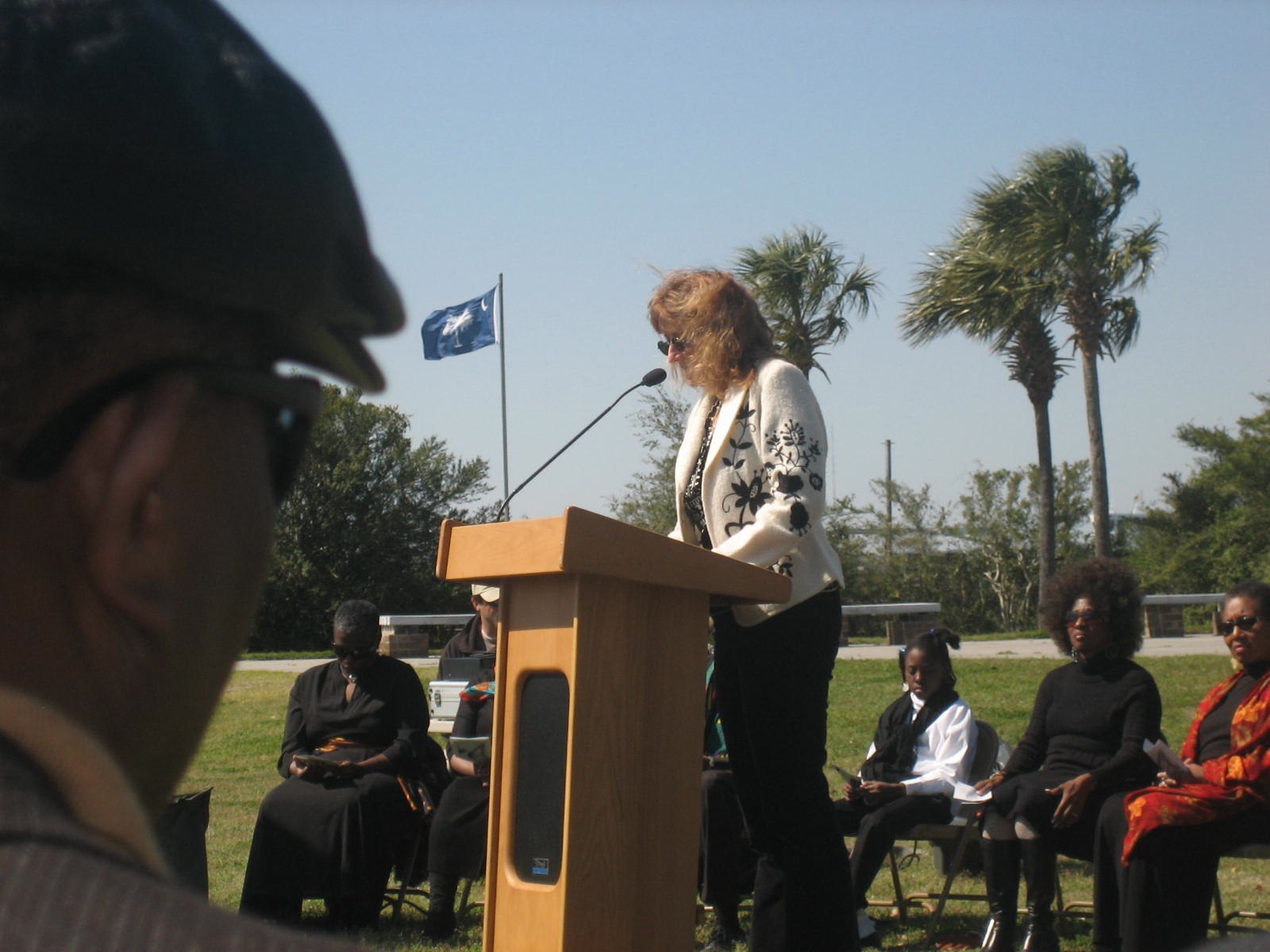
|
| Sullivan's Island, SC, at Opening Ceremonies for the African Passages Exhibit |
TSP: We’ve talked much about your role in poetry. You have also written
a children’s book, Shackles (Legacy Publications, 2009). Not an easy topic,
and not one that comes first to mind when thinking about children’s books. Tell us about your inspiration for this book
and the message it conveys …
Marjory: It is based on a true
story that happened to my sons when we were living out on Sullivan’s Island, which is located about five miles from
Charleston by boat. They are dressed up like pirates, digging for treasure in the backyard when
they dig up a set of slave shackles. I originally wrote a prose poem about the experience called “Manacles,” which
was published in VERB Magazine, but I turned it into a children’s story at the urging of my dear friend novelist/children’s
book author Mary Alice Monroe. I wrote it primarily for the children of South Carolina, so that they would have a more thorough
knowledge of the history of our state.
Sullivan’s
Island was the primary point of entry into North America for about 40 percent (4 to 8 million people) of the millions of Africans
who were enslaved in America. This means that over one third the African-American population has ancestors who were held under
quarantine on Sullivan’s Island. During the height of the slave trade, Charleston was the biggest slave port in America
(1700-1775).
Sullivan’s
Island was the primary place where Africans were held under quarantine in “pest houses” also known as the lazaretto. Originally built during the 1700s, these “pest houses” were designed as places where people
were forced to stay after travelling at sea if there was pestilence or disease onboard ship. Here, Africans would wait for at least ten days and sometimes up to three weeks until they were examined by a
health inspector. If they were alive at the end of the quarantine period, they were released back to their captors and brought
to Charleston to be sold at auction, where they went to work on plantations, in the rice fields etc.
Nobel Prize
winning author Toni Morrison recently came to Sullivan’s Island to place “a Bench By The Road” – it
is behind Fort Moultrie, facing the water. On that occasion she said, “It’s never too late to honor the dead.
It’s never too late to applaud the living who do them honor.”
TSP: Aside from human rights issues,
you also write beautifully about nature.
Marjory: Perhaps the
earth can teach us/as when everything seems to be dead in winter/and later proves to be alive.
(From the poem “Keeping Quiet” by Pablo Neruda)
How we use our land
and resources is one of the most important issues of our time. Hardly a day passes
without a major news story about development and its impact on the landscape and waterways. At the national and international
level, environmental issues are a subject of continual debate. Poetry can teach
us about something as intractable and complex as the planet we inhabit and all the intricate systems that sustain life?
We have been reworking
our relationship with nature as far back as the industrial revolution. English
poet William Wordsworth lamented at the time. “Little we see in nature that is
ours.” Since then, science and technology have increased our mastery over nature, but with that mastery we have
lost a spiritual and emotional connection with the natural world that we long for. Now,
we’re confronting rising sea levels, a changing atmosphere, extinction of species, poison air and water, and diminishing
supplies of nonrenewable resources. Poetry can help shape our cultural response to
these enormous environmental changes.
Poets look to the natural
world to find metaphors and meaning. Nature inspires intense feelings of awe and
reverence. American poet Edward Hirsch wrote that this feeling of awe is the deepest
spirit of poetry. Poets pay attention to details that others may not notice.
These sensory details create a visceral sense of place that is vivid and intense. This
reverent attention to nature started a very long time ago. Haiku poems, for example,
originated in Japan in the Middle Ages. These poems were always located in the
natural world, attentive to time and place (the season), and contained ideas about nature derived from the Zen Buddhist tradition. In other words, writing and reciting Haiku was a religious practice that responded
to the environment.

TSP: Finally, you are also a book publicist. Indeed, your list of interests and
pursuits, Marjory, is making us tired over here … you accomplish so much! In this day and age of social media, and the
venues of how we get our news, how we buy our books, how we read our books, e-readers
and such … how do you keep up? How do writers keep up? How has publicity changed? Although, if we ask this one month
later, your response may already be different …
Marjory: I am doing less and less publicity, actually. I am teaching English and creative
writing full-time and want to continue teaching college students.
Public relations and
marketing are based on communication. Poets have distilled written communication down to its essentials, in terms of meaning,
imagery and sound. Although on the surface poetry may seem to be the antithesis of promotion, these things have interwoven
in my professional life in ways that I never could have imagined.
I think writers have
to be smart about blogging and using Facebook as a way to do their own promotion. Publishers are spending less and less on
promotion and conventional author tours, and I think under any circumstances writers have to promote their own work as well
as they possibly can. Poets, of course, can give readings and sell books at that time.
TSP: Thank you so very much, Marjory, for talking to us and to our readers. Your
work is extraordinary. We will not let you go so that you may keep writing … and perhaps something new will appear soon?
Marjory: My next book is the
non-fiction book I mentioned earlier Taking a Stand: The Evolution of Human
Rights, coming out this fall with Macmillan. This project has been enormously
consuming, and I getting back into the poetry mode just this month. I just had
a poem in Appalachia and have poems forthcoming in a couple of anthologies, Fledgling
Rag, and Connotation Press: An Online Artifact.
To learn more about
Marjory Wentworth, visit these sites:
www.marjorywentworth.net
www.southernartistry.org/Marjory_Wentworth
www.lilaconnects.com
www.poetrysocietysc.org
Read the review of The Endless Repetition of an Ordinary Miracle.
|

